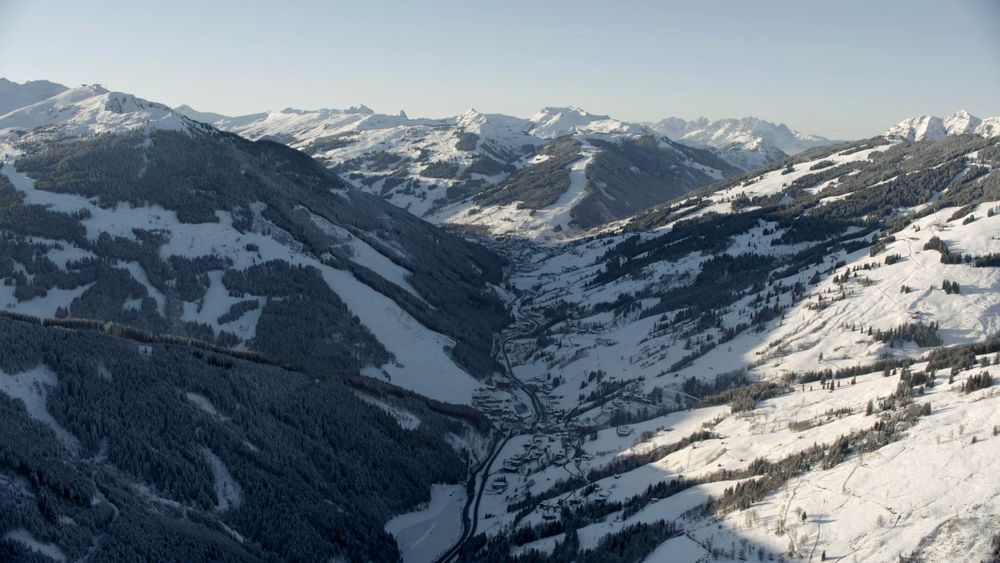Saalbach-Hinterglemm
Where Nature Comes Out On Top
To mark the opening of the FIS Alpine World Ski Championships 2025, the Austrian Broadcasting Corporation (ORF) presents a brand new UNIVERSUM documentary about the Saalbach-Hinterglemm region, which hosts this year's competition. Saalbach-Hinterglemm lies at the heart of Austria and is one of the Alps' most renowned ski regions. The documentary takes the viewers on a journey of discovery, seeking out the animals, plants and patches of wilderness that exist in this popular winter tourist destination.
Saalbach-Hinterglemm is located in the Glemmtal valley, which is surrounded by the Pinzgauer Grasberge or "grass mountains". Over hundreds of years, people have cultivated the landscapes here. In recent decades, winter tourism has brought wealth and development to what was once a poor mountain farming region. Flanked by the Northern Limestone Alps and the rugged Central Eastern Alps, Saalbach-Hinterglemm and its surroundings are home to a wide range of habitats, often connected by the Saalach River.
The river winds its way from its springs through the Glemmtal and Saalachtal valleys, eventually flowing into the larger Salzach River north of Salzburg. More than 100 kilometres long, the river binds together the many different regions along its course, spaces shared by humans and wildlife alike. Many of the animals here are specialist species or have adapted to their changing surroundings, demonstrating both the resilience of nature and the responsibility of people to protect it.
"I was surprised and moved by just how diverse, durable and flexible the natural environment is," explains Therese Engels, the director of the film. "Our world is intricately and intimately connected, and humans are an important element of this complex system. As a result, we have a responsibility to preserve our surroundings – particularly in areas where tourism is a major economic factor."
Wildlife has maintained a foothold throughout the area: on the large mountain pastures surrounded by spruce forests, on mystical moors high above the valleys, in flourishing meadows and in the side valleys of the Glemmtal, where red deer roam all year round. When the vegetation begins to turn a rusty red in autumn, rutting season begins. In winter, chamois pursue each other at breakneck speeds across the uneven landscapes against the backdrop of frozen waterfalls and steep rock faces. Bearded vultures had vanished from the Alps by the beginning of the 20th century, but now once again circle above the land as a result of reintroduction efforts. The majestic birds are a symbol of how nature's networks can endure or recover – if humans allow them to.
A further example of this resilience is the beaver, which had similarly disappeared and has now returned of its own accord, creating new floodplain habitats along tributaries of the Saalach River, which is also home to grey wagtails and white-throated dippers.
"I wanted to capture the incredible variety and beauty of the region," Engels says. "I always try to approach my subjects without preconceptions, paying close attention to the landscapes and their inhabitants and the stories they have to tell."
The documentary also features some of the people who are making a difference here and who are committed to preserving natural habitats and their residents. These include Ulrich Brendel and his team from the Berchtesgaden National Park, who release young bearded vultures into the wild and observe their progress over time, and Werner Krupitz, who works to ensure that the impact of construction projects on local amphibian populations is kept to a minimum.
Anna Heuberger, an avalanche forecaster, spends her winters keeping the slopes safe and her summers maintaining the diversity of the meadows. Fabian Holzinger has discovered an ingenious method of giving beavers a voice, and Johann Neumayr has spent decades observing these meadows and the insects that inhabit them. This is a world of specialists in which flowers and pollinators have adapted to each other over millions of years.
Fascinating macro and high-speed footage captures the tiny wonders and intricacies of aspects of nature that are often taken for granted, including chafer beetles, elder shrubs and bumblebee nests. Hedges are a prominent feature of the regional landscape and serve as boundaries as well as a complex network of habitats and travel routes for creatures great and small. Trees and bushes host birds, caterpillars and butterflies that, in turn, help to spread the plants' pollen and ensure their survival.
"Saalbach-Hinterglemm – Where Nature Comes Out On Top" is an exploration of a world subjected to constant transformation as a result of a changing climate and human activity. It is a world in which wildlife has to adapt in order to survive and in which people have an important role to play in preserving the complex, often invisible systems that are the very foundation of life.
The documentary is a co-production of Interspot Film and the Austrian Broadcasting Corporation (ORF), funded by the Austrian Television Fund, VAM and Land Salzburg in association with the Tourismusverband Saalbach Hinterglemm. Produced in accordance with the Austrian Ecolabel guidelines for Green Producing.
Details
Written and Directed by:
Therese Engels
Producers Interspot Film:
Ingrid Klingohr,
Nikolaus & Nils Klingohr
Executive Producer Interspot Film:
Martin Demmerer
Commissioning Editor ORF:
Gernot Lercher
Production Management Interspot Film:
Christoph Prochazka
Completion: late 2024
Details
Written and Directed by:
Therese Engels
Producers Interspot Film:
Ingrid Klingohr,
Nikolaus & Nils Klingohr
Executive Producer Interspot Film:
Martin Demmerer
Commissioning Editor ORF:
Gernot Lercher
Production Management Interspot Film:
Christoph Prochazka
Completion: late 2024


